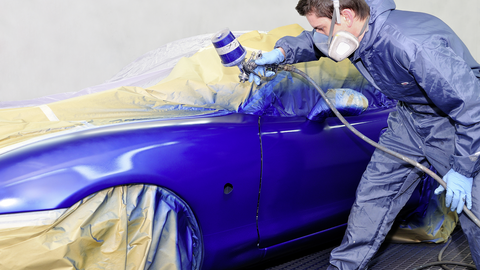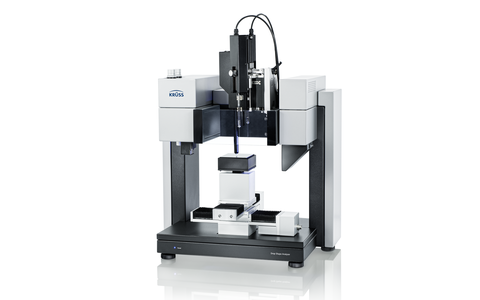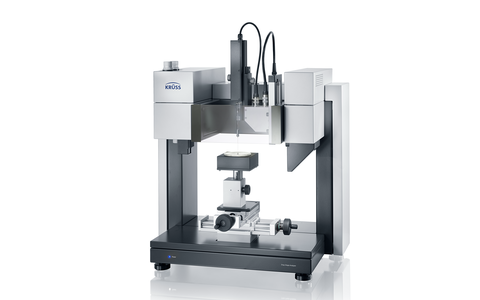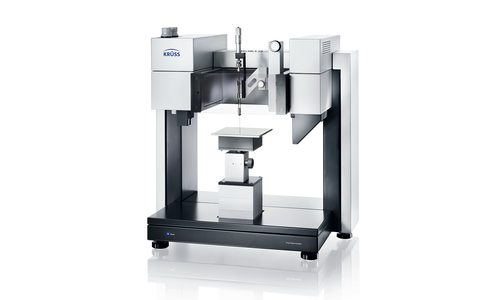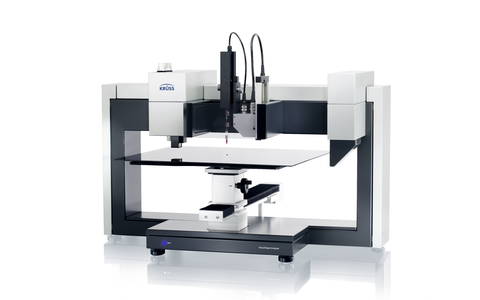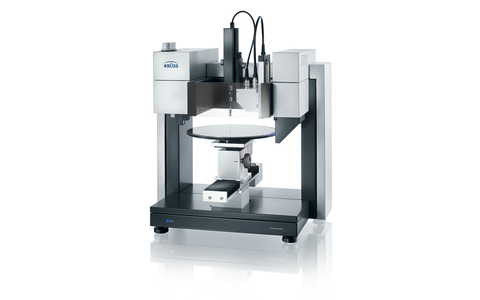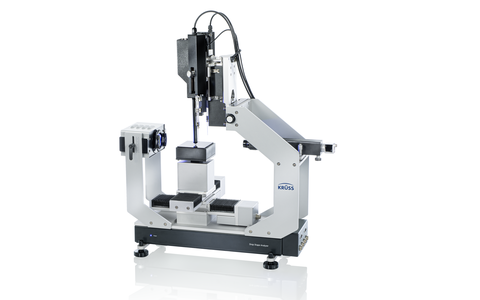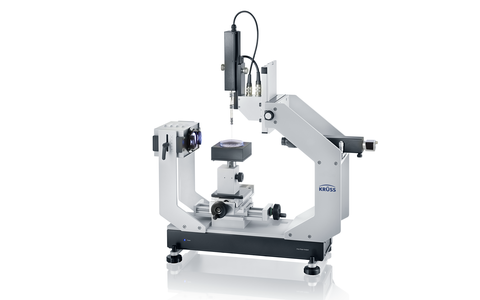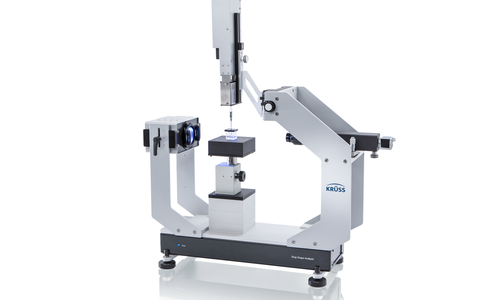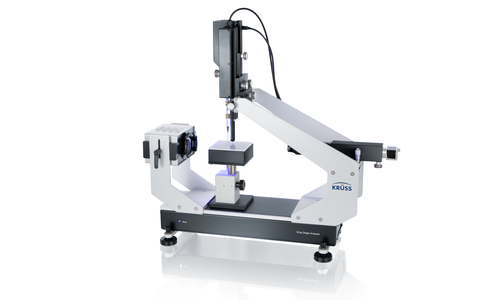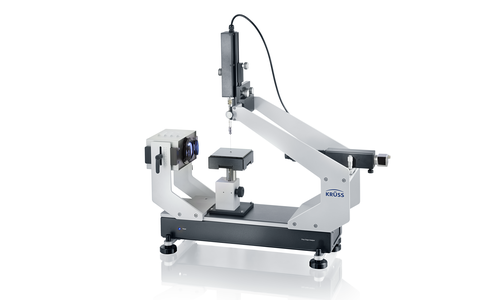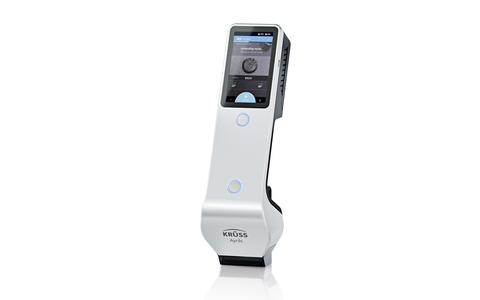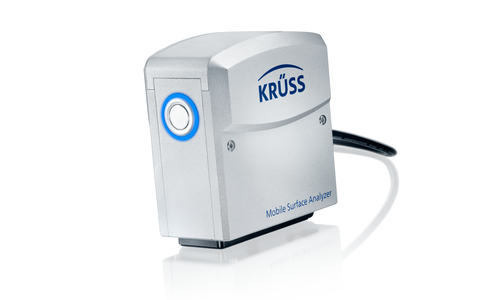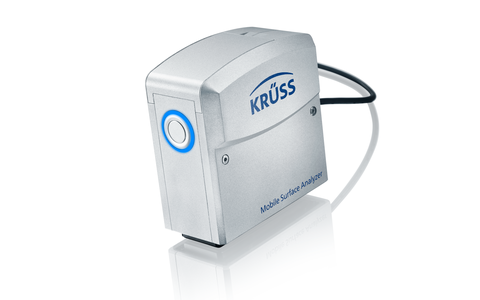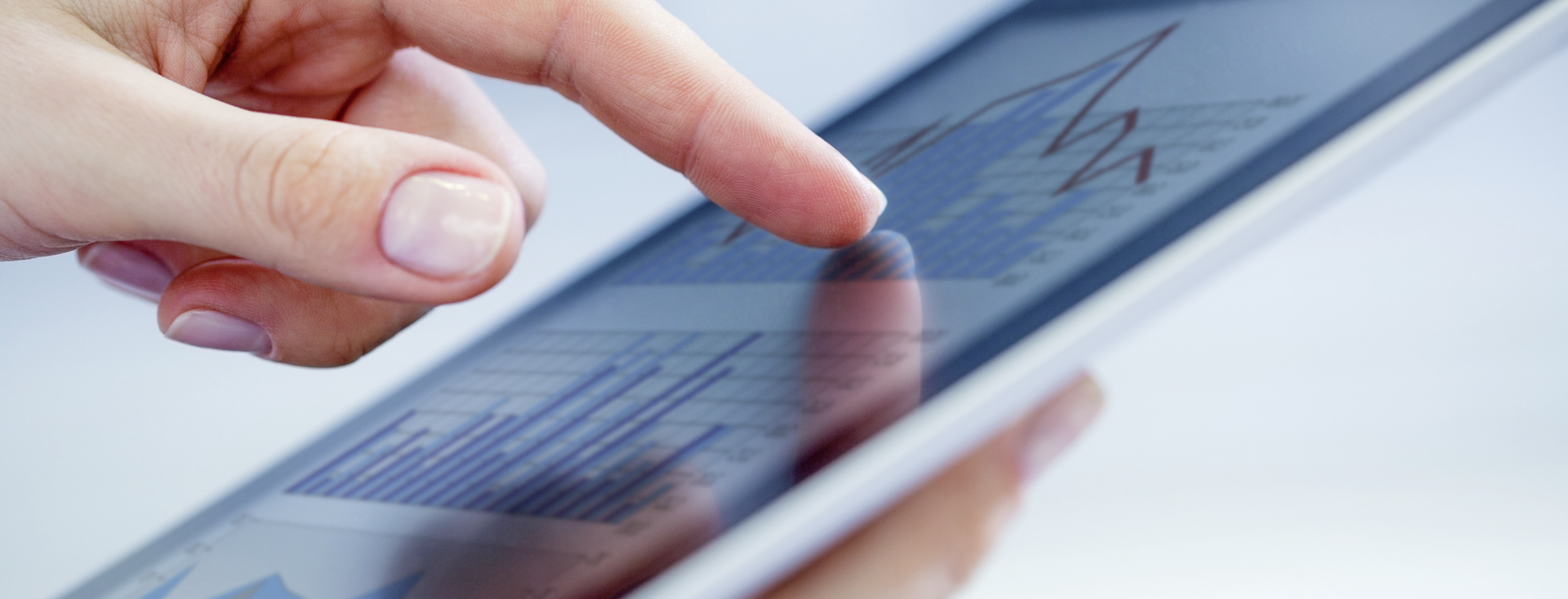
Coating of glass
Quality control of the interface chemistry of glass bonds and treated surfaces
Glass surfaces are coated for many reasons: for safety, for convenience or for better stability. To ensure that the coating is uniform and durable, both the glass surface and the coating must be prepared for the coating process. Our contact angle measuring instruments and tensiometers assist glass-processing companies in the design and quality assurance of the coating process.
Typical glass-coating applications
- UV protection
- Heat protection
- Water-repellent coating (automobile glass, spectacle lenses, shower walls)
- Shatter protection
- Easy-to-clean and self-cleaning coatings
- Graffiti protection
Preparing the coating
Glass surfaces must be dry and free from grease before coating. Wettability measurements can be used to check that the cleaning is thorough and uniform, as a homogenous glass surface has the same water contact angle everywhere. Our mobile measuring equipment enables glass surfaces of any size to be tested non-destructively.
The surface free energy of glass surface and coating should be such that interactions between the phases ensure good wetting and adhesion. For this purpose, the glass can be accurately characterized using a contact angle measuring instrument, and the coating using a tensiometer. Good wetting can be expected if the surface tension of the coating is less than the surface free energy of the glass.
The ratio of polar and non-polar (disperse) interaction parts of the surface tension of the two phases is decisive for the adhesion of the coating. The more similar the pro-rata polarities, the better the coating adheres.
The following process often lends itself to ensuring the quality of glass surfaces during production: Suitable limiting values are first determined in the laboratory using our stationary contact angle measuring instruments, and adherence to these is then checked on site using a mobile unit.
Assessing the coating
The uniformity, long-term stability and coating effect achieved can be checked after coating by means of non-destructive contact angle measurement. After cleaning, a uniformly coated glass surface should have the same contact angle everywhere.
The long-term stability of the coating can be determined with the help of loading tests, for example in the case of automobile glass by measuring after a different number of screen wiping operations. If the coating is stable, the contact angle will not change even after many cycles.
The characteristic of uniformly hydrophobic coatings is a water contact angle of greater than 90° measured over the whole surface. Measuring the roll-off angle is also informative. This can be determined with the help of our tilting table. In the case of hydrophobic or nano-coated, self-cleaning glass surfaces, the drop starts to move at a very small tilt angle.






